NEW YORK — Marbles have been favorites with children for around three millennia. Archaeologists have discovered them in the ruins of Ancient Egypt and at Native American burial grounds.
The earliest examples of marbles were round rocks or spheres formed from clay, but over many centuries they evolved, and by the 1860s, glass marbles were being made by hand in Germany. At one time, almost all hand-manufactured marbles were made in Germany, but the production of machine-made marbles in America, along with the start of World War I, eventually froze out the market for hand-made marbles. Today, there are many collectors for both machine and hand-made varieties.
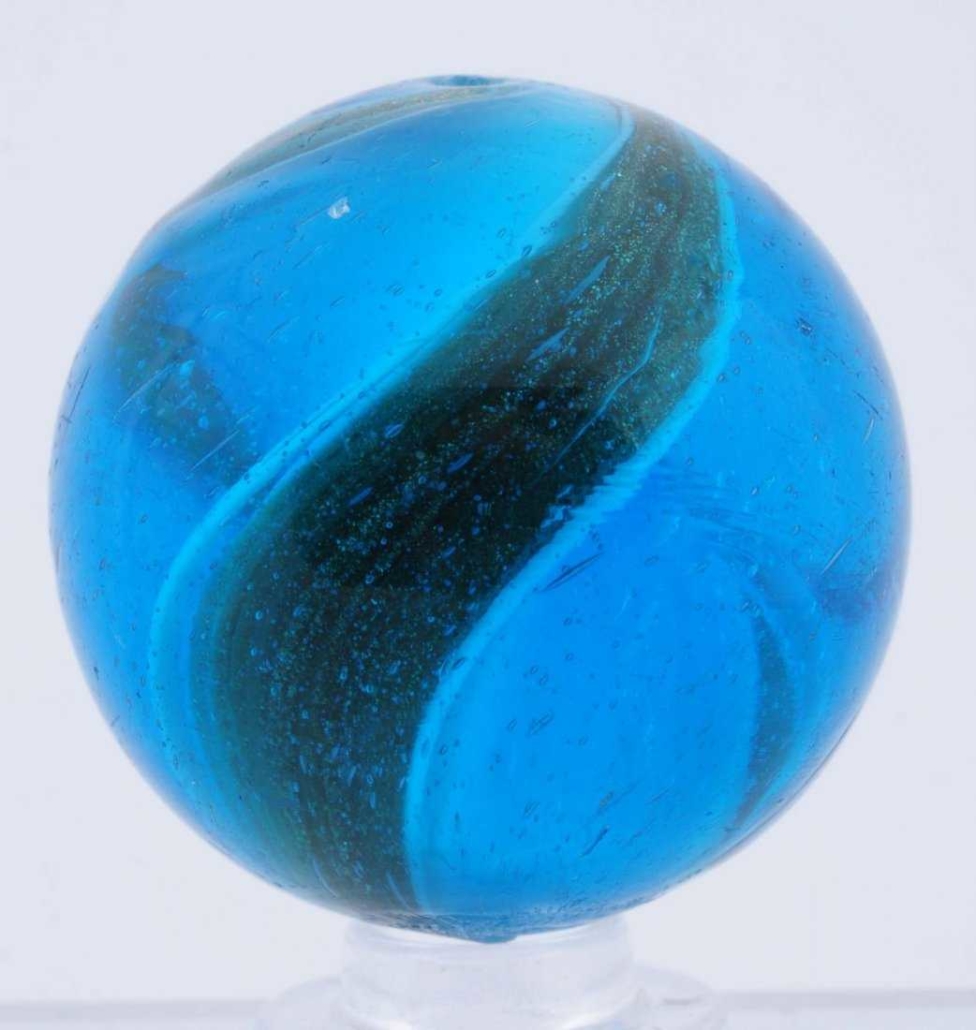
Longtime marble collector and dealer Bob Block of Trumbull, Connecticut, is an active member of the Marble Collectors Society of America. He shared some of his knowledge with Auction Central News. “I started collecting marbles because my father collected them, so I used to go to shows with him,” he said, noting that he began to amass his own collection in the late 1970s. Many marble collectors in the 1960s and ’70s entered the hobby out of nostalgia, recalling their childhoods spent playing marble games like “ringer” or “chasies.” In more recent years, however, children have turned their focus to new interests, namely video games and technology, so marbles are collected more as miniature works of art than reminders of one’s youth.
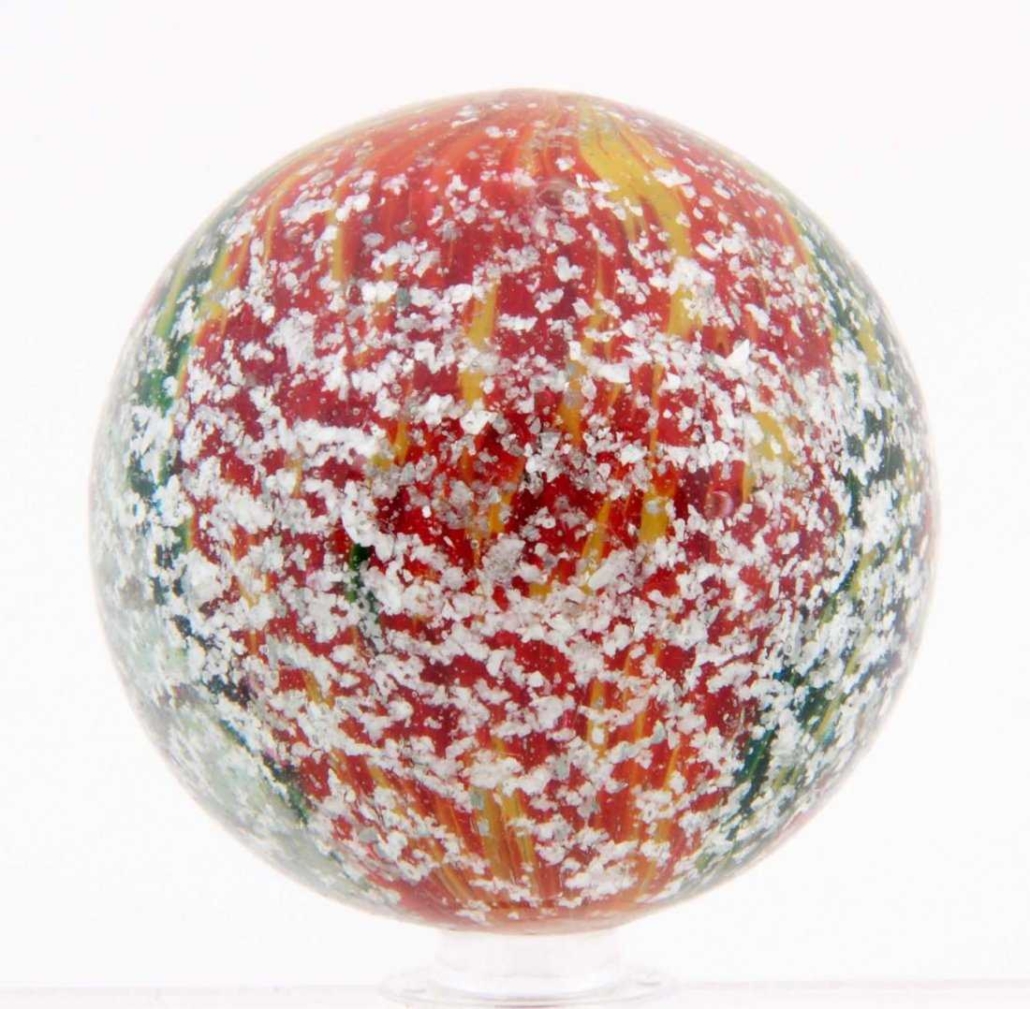
The variety of decoration and patterns in antique marbles is seemingly endless. There are clambroths, which are swirled marbles having an opaque background with colored swirl strands (either single color or multicolored), and transparent “sulfides,” which have a sulphide figure — often an animal depiction — embedded inside. Lutz (ground goldstone) marbles can come in many forms, including the banded lutz with a transparent, semi-opaque or single-colored base; a ribbon lutz having a wide single- or double-ribbon of colored glass; an onionskin lutz with an “end-of-day” onionskin core and lutz bands, or a sprinkling of lutz, against a clear or cloudy glass base. End-of-day cloud marbles are commonly made of clear glass with colored glass flecks. Typically the more colors a marble has, the greater its value. Other strange-sounding terms to those not in the know but very familiar to marble collectors are: slags, agates, bloodies, blackies and cat’s-eyes.
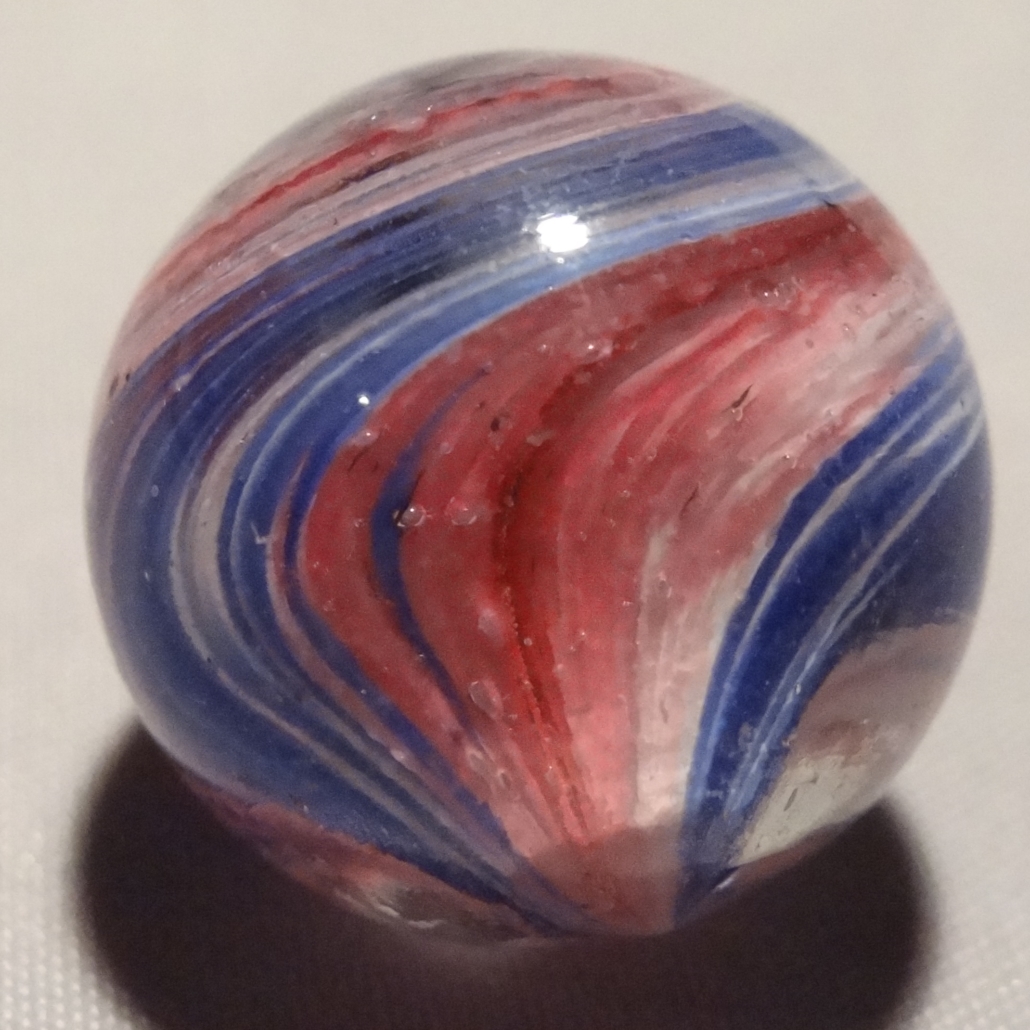
“The most desirable and collectible antique handmade marbles are lutzes, and some of the more esoteric onionskin-type marbles have mica sprinkled in them,” Block said. “In terms of vintage machine-made marbles, the most highly collectible are those made by the Christensen Agate Company, which began in Ohio in 1925 and made marbles for a few years in the late 1920s; and the Peltier Glass Company of Ottawa, Illinois, which opened for business in 1886.”

Desirability stems from a marble’s rarity, Block explained, noting that with Christensen marbles, the “guinea” is highly coveted, as are some of the exotic swirled marbles with very bright colors. “The ‘World’s Best Guineas’ are transparent-based marbles with colored flecks of glass melted and stretched on the surface,” says the Marble Collectors Society website.
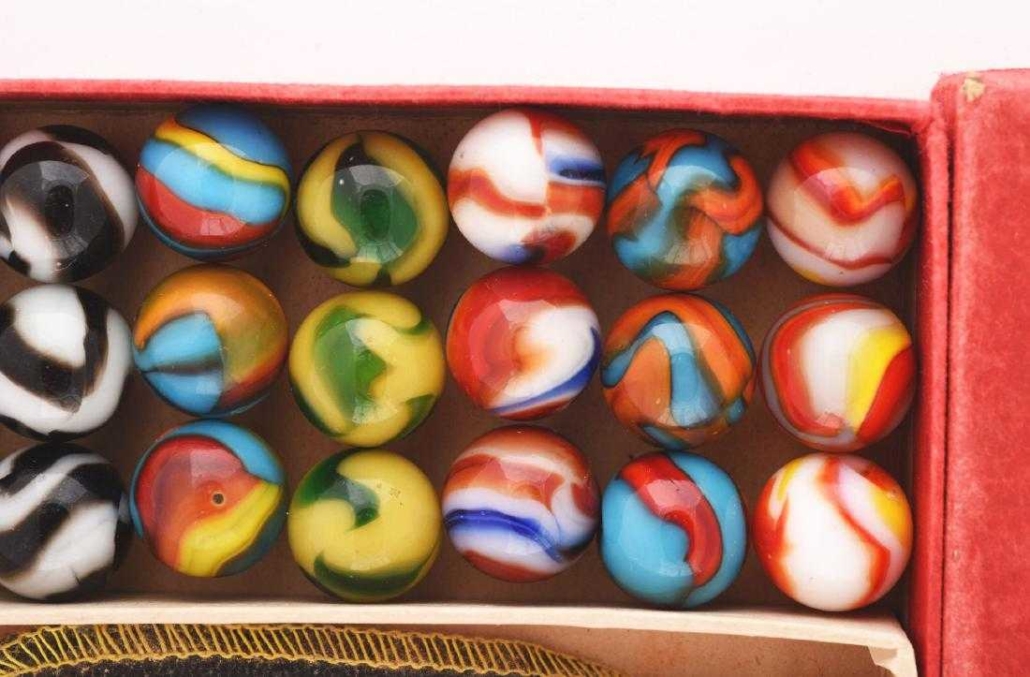
“For the Peltiers, it’s the multicolored National line Rainbo type of marble,” Block said, noting that Rainbos are currently hot collectibles. This particular marble was produced from 1925 to 1930, with the most desirable examples made in the late 1920s. Other collectible Peltiers include the picture or comic marbles featuring transfer decoration of syndicated comic characters fired onto the surface of the marble. Most coveted are those with transfers depicting cowboy film star Tom Mix, or period advertising.
There is a separate and growing collector market for contemporary artist marbles — an outgrowth of the art glass or contemporary glass paperweight markets, Block explained.
Offering advice to new collectors, Block said, “Marble identification is really difficult. You would think it’s fairly straightforward because it’s a child’s toy, but to be able to recognize patterns that are unique to certain companies or to recognize marbles produced by certain companies as opposed to recent ones that look like them is very difficult and takes lots of experience.” Block always suggests people attend marble shows if they live near the few that still take place or check out Facebook marble groups and pages, where collectors share information.
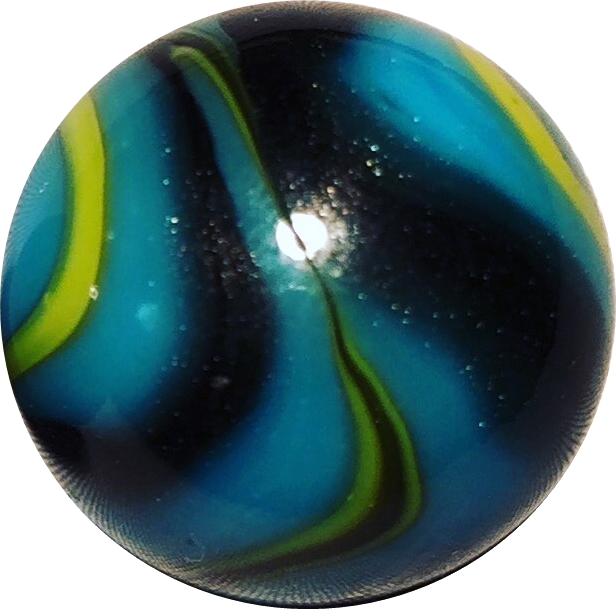
“Marbles are a great collectible because you can build a fairly good display in a very small area, because they are so small,” Block said. “I’ve been collecting them for close to 50 years and I still don’t know everything about them. And I still don’t have enough marbles.”
# # #
Vintage & Antique Marbles on LiveAuctioneers
- Antique marbles from Akro Agate Company in original package. 100 No. 0 Assorted Striped Onyx. Cardboard stock box.
- Akro Agate No. 1 Assorted Corkscrew Box Set
- Marbles for sale
- Marble prices


